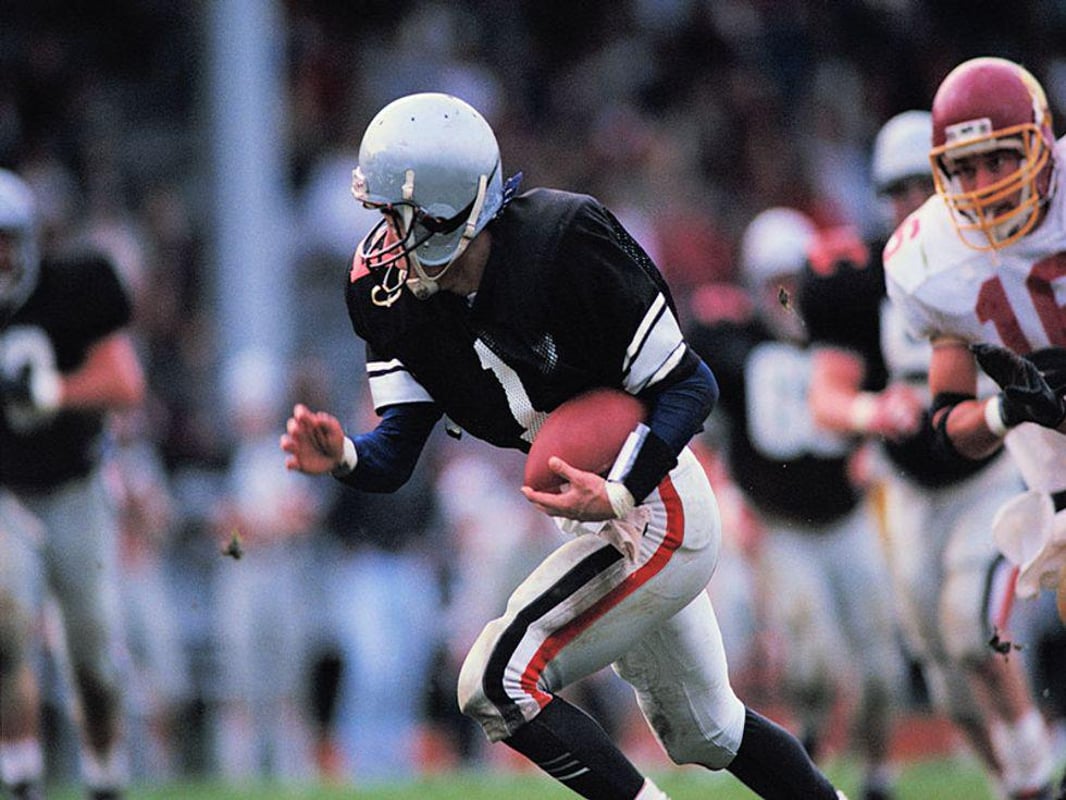Why Football Players Want a Lower Number on Their Jerseys

THURSDAY, Sept. 7, 2023 (HealthDay News) -- “Vain” isn’t a word normally associated with football players, but many wide receivers believe they look slim and fleet-footed with a lower number on their jersey rather than a higher one.
New research shows these players are onto something.
In two experiments, subjects shown images of players consistently said that those wearing jerseys numbered 10 to 19 looked thinner than those in jerseys 80 to 89 -- even when their body sizes were the same, according to a new report in the journal PLOS ONE.
Researchers say this is because the way we perceive numbers appears to influence our perceptions of body sizes.
“How we perceive the world is highly influenced by our prior knowledge,” said senior researcher Ladan Shams, a professor of psychology and neuroscience at the University of California, Los Angeles.
“In our daily lives, numbers written on objects -- on a bag of sugar in the supermarket or weights in the gym -- usually represent the magnitude of the objects," she said in a university news release. "The higher the number, the bigger or more massive the object generally is.”
The study followed up on a 2019 ESPN report exploring why many football wide receivers prefer to wear jersey numbers between 10 and 19.
A longtime NFL rule required wide receivers to wear uniform numbers between 80 and 89, but the league changed the restriction in 2004.
Pass-catchers leapt at the opportunity for a lower number on their uniforms. By 2019, nearly 80% of wide receivers wore a jersey number between 10 and 19.
Many athletes told ESPN that they simply believed the lower numbers made them look faster and slimmer than the higher numbers traditionally assigned to their position.
Shams offered a psychological explanation for the phenomenon to ESPN in that report, but emphasized at the time that there was no scientific research on the topic.
Thus intrigued, she decided to investigate the topic herself.
Shams specializes in the science of perception, and she returned to the question about jersey numbers when the COVID-19 pandemic hampered her progress in other research efforts.
Shams and her research group devised an online study to test her suppositions about the popularity of lower numbers.
Participants were shown computer-generated images of players in identical poses, although their individual body size varied along with the color of their skin and jersey.
Subjects saw each player twice, once each in jerseys with high and low numbers.
In general, players in jerseys numbered from 10 to 19 were judged thinner than players in jerseys numbered 80 to 89, regardless of their body size and their skin or jersey colors.
The research team repeated the experiment in person after pandemic restrictions eased, this time focusing on how the shape of numbers might affect perception.
Because the number 8 is wider than 1, the researchers wanted to see whether the amount of jersey space occupied by numbers from 80 to 89 made players look huskier.
This time, they chose number combinations that used the same numbers but varied only in which digit came first -- 17 and 71, 18 and 81, 19 and 91.
Subjects still perceived players with higher numbers to be heftier than players with lower numbers, although the effect was somewhat smaller than in the first experiment.
It appears that when processing perception of body size, the brain leans on already established associations between numbers and size attributes, Shams said.
“Previous research has established that our brains are very good at detecting and storing statistical associations and regularities, unbeknownst to us, and those associations can shape future perception,” she said.
Those associations generally help the brain efficiently organize and interpret sensory input, which can be noisy, unreliable and ambiguous. The ability to perceive the world quickly and correctly is critical for survival, Shams noted.
The study is a good reminder that these sorts of perceptual biases are constantly at work in the human brain, and can be harmful if they lead to negative judgments and behavior toward specific people or social groups, Shams said.
That sort of implicit bias can affect human behavior toward others, whether the person realizes it or not.
“Our work highlights the importance of representation,” Shams said. “We need to see all kinds of people doing the full diversity of things people can do. We can use the statistical learning power of our brains to reduce implicit bias.”
More information
Harvard Business School has more about perceptual biases.
SOURCE: UCLA, news release, Sept. 6, 2023
Related Posts
Hispanic Patients Wait Longer When Presenting to ED With Chest Pain
MONDAY, May 16, 2022 (HealthDay News) -- Hispanic patients presenting to the...
Pandemic Showed Teachers’ Key Role in Spotting Child Abuse
THURSDAY, Aug. 11, 2022 (HealthDay News) -- Teachers play a critical role in the...
Cystatin C-Based eGFR Strongly Correlates With Creatinine-Based eGFR
MONDAY, March 6, 2023 (HealthDay News) -- Cystatin C estimation of glomerular...
Se arraiga un brote de COVID en verano: no la confunda con un resfriado
LUNES, 31 de julio de 2023 (HealthDay News) -- Por cuarto verano consecutivo,...
